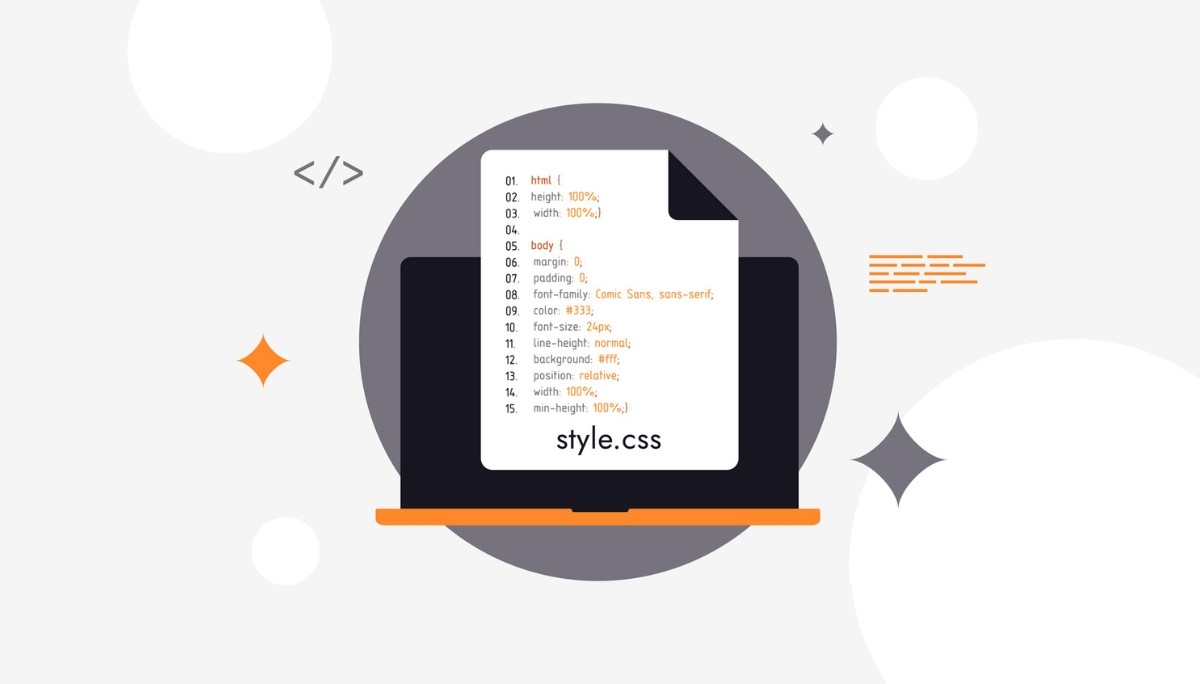How do AI Engineers Address Bias in AI Models?
By
Samantha Cox
•
Jun 17, 2025
AI isn’t immune to bias. In fact, it can quietly amplify the worst of ours. When models are trained on flawed data or built with blind spots, they can produce skewed results that affect real lives in high-stakes areas like healthcare, hiring, and law enforcement. So, where does this bias come from? And more importantly, how do we fix it? In this article, we dig into the roots of AI bias, the ripple effects it causes, and what it takes to build fairer, more accountable systems.
Key Takeaways
AI bias originates from human biases in training data and model design, impacting fairness and leading to discriminatory outcomes in critical areas such as healthcare and hiring.
Addressing AI bias requires a multifaceted approach, including data pre-processing, implementing fairness-aware algorithms, and conducting post-processing adjustments to ensure equitable outcomes.
Collaboration and diversity in AI development teams enhance the ability to recognize and mitigate bias, fostering the creation of fair and ethical AI systems.
Understanding Bias in AI Models

AI bias happens when the technology picks up on human prejudices hidden in the data or the way it's built, leading to unfair or skewed results. This bias can manifest in various forms, such as gender bias, racial bias, and stereotyping bias. The two primary sources of bias in AI models are model design and training data. AI models can reflect historical biases in training data, leading to discriminatory outcomes. For example, if historical data is biased against certain demographic groups, the AI model trained on that data will likely produce biased outputs. Additionally, addressing AI biases is crucial for improving the fairness of AI systems.
Algorithmic bias, another critical aspect of AI bias, arises from flaws in the design and parameters set by developers. These biases can inadvertently favor certain groups over others, leading to unfair treatment. Bias in AI tools raises ethical issues, as it can cause harm to others. For instance, biased AI systems in healthcare can result in misdiagnoses and unequal treatment for specific people.
AI bias goes beyond being a mere technical issue. It represents a significant challenge for society as a whole. AI systems impact critical areas like healthcare, law enforcement, and hiring, making it essential to address and mitigate bias. Unchecked bias in AI can exacerbate existing inequalities and further marginalize underrepresented groups. Therefore, addressing AI bias is crucial for ensuring fairness and equity in AI applications.
Transparency practices and technologies, such as explainable AI, can help ensure that unbiased data is used in AI systems. Transparent AI decision-making processes allow for better understanding and mitigation of biases in models. Addressing AI bias requires a multifaceted approach, incorporating various strategies and perspectives to create fair and equitable AI systems.
Sources of Bias in AI Systems
Bias in AI systems can occur at various stages, from data collection to model deployment. Recognizing these bias sources is crucial for mitigating them in AI models. Societal factors influencing technology development contribute significantly to bias in AI systems.
Bias manifests in AI algorithms and training data, emphasizing the need for diverse and representative datasets to improve AI outcomes. A continuous feedback loop is required to address bias effectively in AI models.
Data Collection Bias
Data bias in AI refers to the inaccuracies and biases present in the training data, which can adversely impact AI outcomes. Historical data collection can embed societal inequities, creating biases that harm historically underrepresented or marginalized groups in AI applications. If a dataset predominantly includes data from one demographic group, the resulting AI model may not perform well for other groups.
Out-group homogeneity bias is another form of data collection bias. It is the mistaken perception that members of an out-group (compared to ingroup members) share more similarities, which can lead to confirmation bias, misclassifications, and biases in AI predictions.
Bias in data collection often comes from a lack of diverse, representative training data. When certain racial or cultural groups, especially those with darker skin tones, are underrepresented, AI systems can unintentionally reinforce harmful stereotypes. These gaps can lead to biased outcomes with serious real-world consequences.
Algorithmic Bias
Algorithmic bias arises from flaws in the design and parameters set by developers, impacting fairness. AI bias can emerge from systematic discrimination embedded in the algorithms, which may favor certain outcomes based on developer assumptions. For example, if an algorithm is designed with certain assumptions about what constitutes “normal” behavior, it may unfairly disadvantage some groups over others, leading to biased algorithms.
Design choices in algorithms can inadvertently favor certain groups over others. Cognitive biases can influence human decisions during AI development, leading to biased outcomes in tools. Careful consideration of design choices and the impact of cognitive biases is necessary to address algorithmic bias.
Human Interpretation Bias
Human interpretation bias arises from cognitive biases that impact judgments made during AI system development. Human cognitive biases can inadvertently influence AI during the data labeling and model development phases. For example, if data labelers have biases against certain groups, these biases can be reflected in the labeled data used to train AI models.
Cognitive bias from subjective decisions can lead to unintentional reinforcement of existing stereotypes and inequities in AI models, particularly concerning sensitive attributes. Addressing human interpretation bias is essential for ensuring fairness and equity in artificial intelligence bias in AI tools and applications, as it can reinforce discrimination.
Awareness and active mitigation of our own biases can lead to the creation of fairer and more equitable AI systems, promoting counterfactual fairness to mitigate AI bias.
Real-World Consequences of AI Bias

The real-world consequences of AI bias are significant and far-reaching. Bias can emerge at various stages of the AI development process, such as data collection, algorithm design, and interpretation. Discrimination and social inequalities are real-world consequences of bias in AI. Biased AI systems in law enforcement can lead to over-policing in minority neighborhoods, and biased hiring algorithms can negatively impact women and minority candidates.
The consequences of unaddressed AI bias impact accuracy, organizational success, and participation in society. AI bias can:
Deepen social inequalities
Reinforce stereotypes
Raise ethical and legal concerns
Limit job opportunities
Cause reputational damage
Impact health outcomes
Addressing and mitigating bias in AI systems is crucial for ensuring fair and equitable outcomes for all.
Discriminatory Outcomes
Discriminatory outcomes are a significant consequence of AI bias, particularly in healthcare. These include:
Healthcare algorithms misclassifying or underrepresenting certain demographic groups, leading to unequal health outcomes.
Underrepresentation in health data skews predictive AI algorithms.
Resulting in misdiagnoses and unequal treatment for specific populations.
Bias in AI hiring algorithms can negatively affect women and minority candidates, leading to systemic inequities. Biased predictive policing algorithms can forecast increased crime rates in minority neighborhoods. This leads to a situation of over-policing in those areas.
Even minor biases in training data can lead to significant discriminatory effects when processed at scale by predictive policing AI algorithms. Regular audits of AI outputs help detect and rectify biases after model deployment.
Reinforcement of Stereotypes
Generative AI systems may perpetuate biases found in their training data, potentially leading to harmful stereotypes. AI models can perpetuate harmful stereotypes, particularly regarding gender roles and racial identities. An AI system trained on biased data may reinforce stereotypes about certain groups, resulting in unfair treatment and discrimination. This issue highlights the importance of addressing generative AI bias in the development of AI systems.
Human biases can influence how AI systems are interpreted and used in practice. AI-generated content may not accurately reflect the diversity of society, reinforcing existing biases. Addressing these issues requires a concerted effort to create AI systems that tackle bias at every stage of the AI development lifecycle.
Strategies for Mitigating Bias in AI Models

Mitigating bias in AI models requires a multifaceted approach, incorporating various strategies and perspectives:
Choosing the correct learning model helps avoid bias in AI programs.
Diversity in team backgrounds helps recognize and address bias in AI development.
Effective AI requires balanced data and an awareness of bias at each processing step.
Addressing bias in AI requires a combination of data pre-processing, fairness-aware algorithms, and post-processing adjustments. These strategies promote fairness and equity in AI models, leading to better outcomes for all user groups.
Data Pre-processing
Pre-processing methods aim to adjust datasets to promote fairness before they are used for training AI models. Techniques like normalization and anonymization in data pre-processing can mitigate biases. Sampling techniques can either add or remove data points to balance the representation of different demographic groups.
Transforming data through relabelling can help in achieving a more balanced dataset that mitigates bias. Regularly auditing data for completeness and accuracy helps ensure that AI training inputs are representative. These pre-processing techniques are essential for creating fair and unbiased AI models.
Fairness-aware Algorithms
Fairness-aware algorithms incorporate coding rules to ensure equitable outcomes. These algorithms integrate specific constraints during training to promote equitable decisions. For example, fairness-aware algorithms can be designed to ensure fair treatment across various demographic groups, reducing the risk of bias in AI outputs. This approach is essential for achieving AI fairness in technology.
Integrating rules for fair treatment, fairness-aware algorithms are crucial for mitigating bias in AI models. These algorithms are essential for creating AI systems that are fair and equitable.
Post-processing Adjustments
Post-processing techniques in AI refer to adjusting outcomes after decisions made by AI models. These techniques involve:
Making adjustments to model outputs to promote fairness after the model has been trained.
Correcting biases that remain after training.
Ensuring fairer AI results.
Using automated monitoring tools can help detect anomalies in AI performance early, allowing for timely adjustments. Post-processing adjustments are essential for ensuring that AI systems remain fair and accountable.
Collaborative Efforts to Address AI Bias

Collaborative efforts are crucial for addressing AI bias. Key points include:
Incorporating diverse perspectives within AI development teams can enhance the ability to identify and address bias.
Diverse teams bring perspectives that challenge biases during AI model development.
Fonzi actively connects organizations with a diverse group of pre-vetted AI engineers, enhancing the representation of varied backgrounds in tech.
The inclusion of underrepresented voices in AI development helps prevent the reinforcement of existing societal biases, particularly for historically marginalized groups and minority groups. Global sensitivity in AI solutions is improved by diverse teams that understand cultural and social differences.
Community engagement is emerging as a trend, where organizations involve diverse groups in the AI development process to ensure fairness.
Emerging Trends in Fair AI Development

Emerging trends in fair AI development are shaping the future of AI. Explainable AI (XAI) enhances transparency in AI systems, ensuring that decision-making processes are understandable and justifiable. Responsible AI is becoming increasingly prevalent, allowing users to engage with AI decisions in real time.
Organizations are using synthetic data to augment training sets and create diverse datasets. Fairness-aware AI models are being developed to prioritize equitable outcomes as a core aspect of their design. These trends are crucial for promoting fair and equitable AI development.
How Fonzi Helps Address AI Bias
Fonzi plays a pivotal role in addressing AI bias by utilizing structured evaluations, a diverse talent pool, and fast, scalable hiring. Fonzi employs structured evaluations that include bias auditing to enhance the fairness of AI models.
Fonzi is a curated AI engineering talent marketplace that connects companies to top-tier, pre-vetted AI engineers through its recurring hiring event, Match Day.
Structured Evaluations
The structured evaluations conducted by Fonzi are designed to provide clear signals regarding bias, thus improving the performance of AI systems. By using structured evaluations, Fonzi contributes to more equitable AI outcomes and helps mitigate bias effectively.
Diverse Talent Pool
Diversity in AI development fosters creativity and innovation, leading to better problem-solving and more robust solutions. Fonzi connects businesses with top-tier, pre-vetted AI engineers from diverse backgrounds to strengthen their teams.
A diverse workforce can better represent varied perspectives, helping to build AI systems that are fair and unbiased. The inclusion of diverse talent in AI projects ultimately contributes to more ethical and effective technology solutions.
Fast and Scalable Hiring
Fonzi’s hiring process is designed to be efficient and scalable, enabling quick access to well-matched candidates. By automating key recruiting workflows, Fonzi streamlines the hiring process, ensuring efficiency without compromising candidate experience.
Most hires occur within three weeks, making hiring fast, consistent, and scalable.
Table: Key Strategies for Mitigating Bias in AI Models
Strategies for promoting fairness in machine learning include:
Data pre-processing: Techniques like data cleaning, normalization, and sampling are used to balance datasets and mitigate data bias.
Fairness-aware Algorithms: Integrating specific constraints during training to promote equitable decisions and reduce bias.
Post-processing Adjustments: Adjusting model outputs after training to correct any remaining biases and ensure fairness.
Summary
Addressing AI bias is a multifaceted challenge that requires a concerted effort from all stakeholders involved in AI development. By understanding the sources of bias, recognizing its real-world consequences, and implementing strategies to mitigate it, we can create fairer and more equitable AI systems. Collaborative efforts, diverse teams, and emerging trends in fair AI development are crucial in this endeavor.
Fonzi’s structured evaluations, diverse talent pool, and fast, scalable hiring process significantly contribute to tackling AI bias. Together, we can ensure that AI technologies benefit everyone, fostering a more inclusive and just society.




